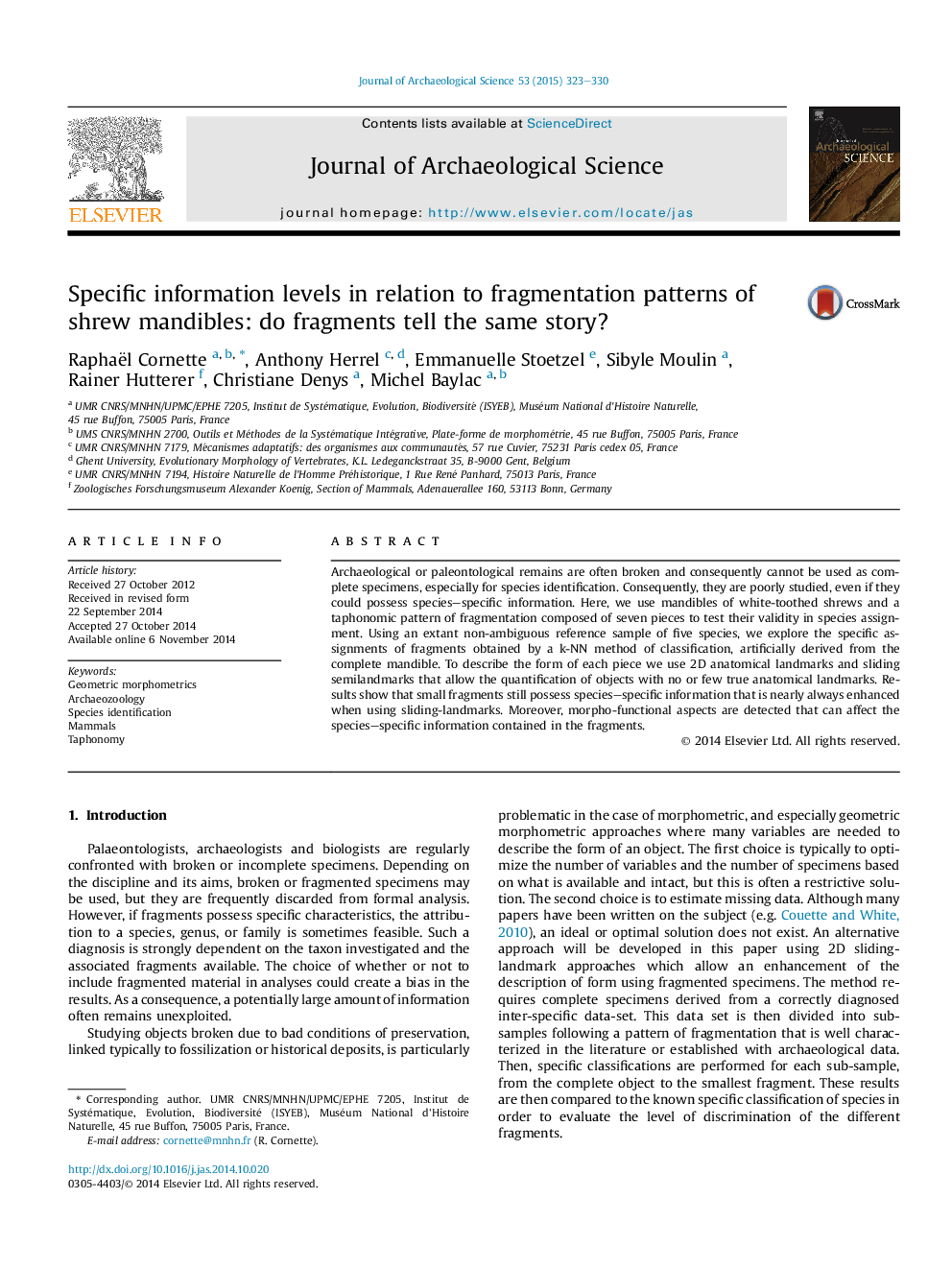| Article ID | Journal | Published Year | Pages | File Type |
|---|---|---|---|---|
| 7442578 | Journal of Archaeological Science | 2015 | 8 Pages |
Abstract
Archaeological or paleontological remains are often broken and consequently cannot be used as complete specimens, especially for species identification. Consequently, they are poorly studied, even if they could possess species-specific information. Here, we use mandibles of white-toothed shrews and a taphonomic pattern of fragmentation composed of seven pieces to test their validity in species assignment. Using an extant non-ambiguous reference sample of five species, we explore the specific assignments of fragments obtained by a k-NN method of classification, artificially derived from the complete mandible. To describe the form of each piece we use 2D anatomical landmarks and sliding semilandmarks that allow the quantification of objects with no or few true anatomical landmarks. Results show that small fragments still possess species-specific information that is nearly always enhanced when using sliding-landmarks. Moreover, morpho-functional aspects are detected that can affect the species-specific information contained in the fragments.
Related Topics
Physical Sciences and Engineering
Materials Science
Materials Science (General)
Authors
Raphaël Cornette, Anthony Herrel, Emmanuelle Stoetzel, Sibyle Moulin, Rainer Hutterer, Christiane Denys, Michel Baylac,
